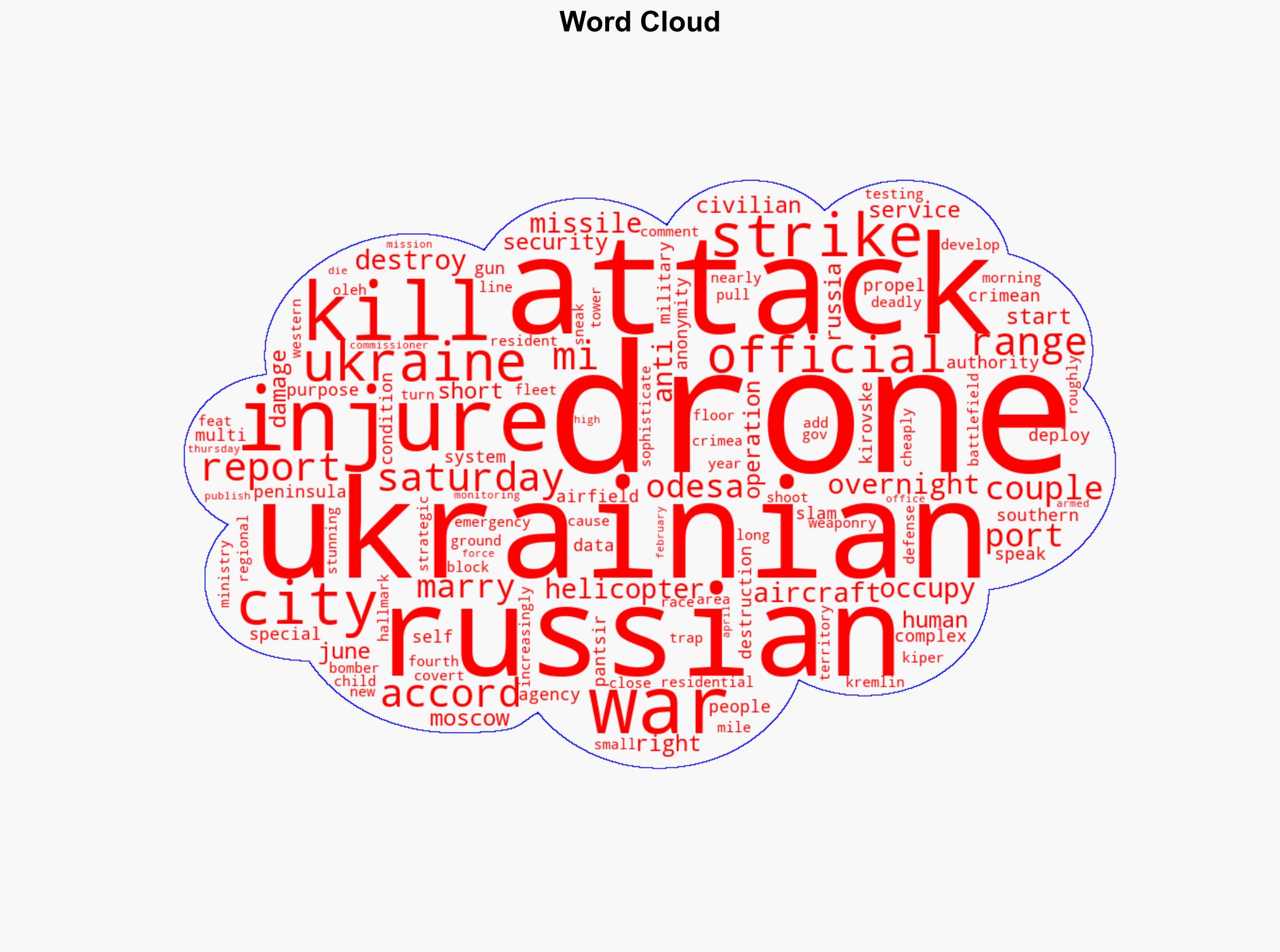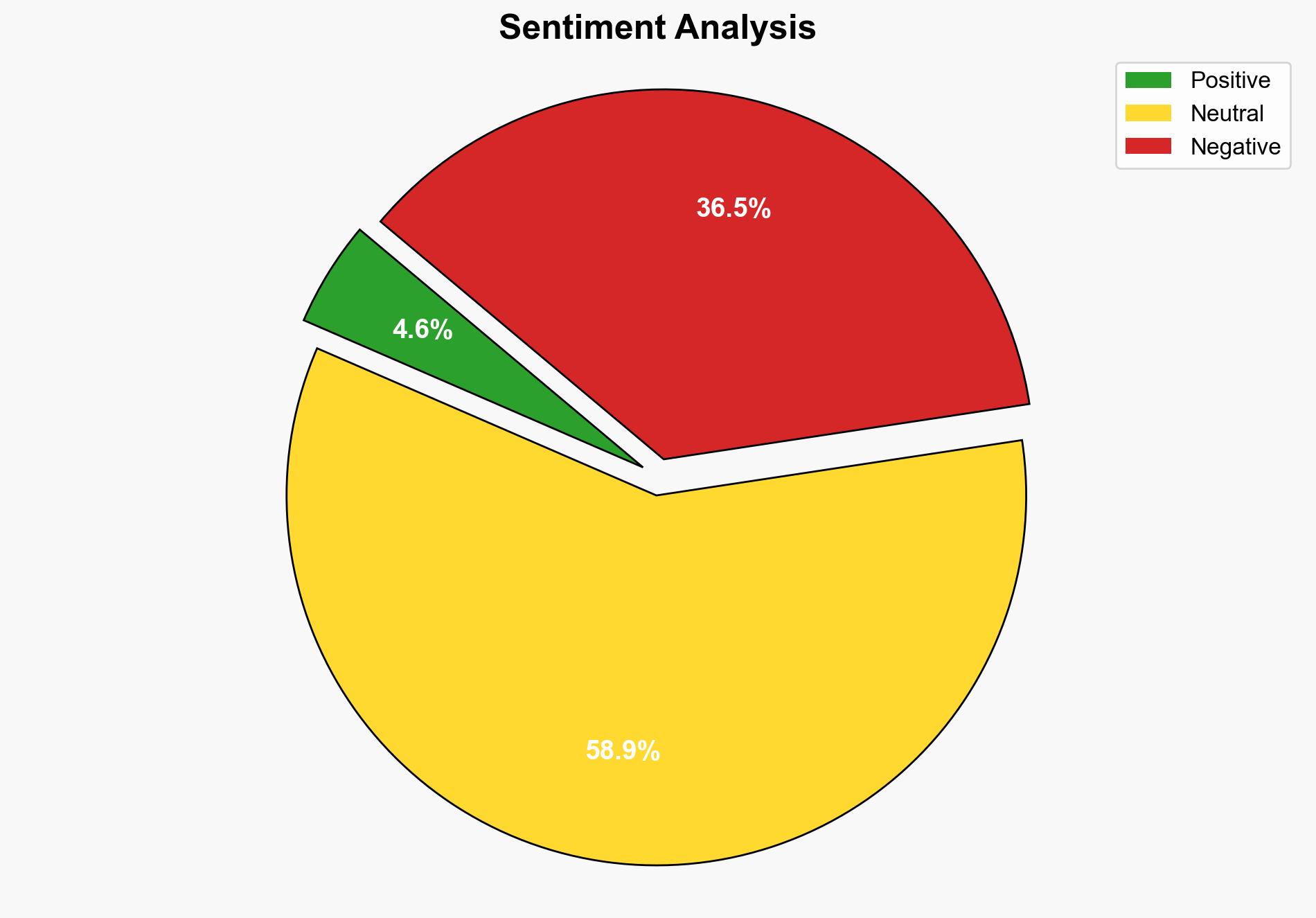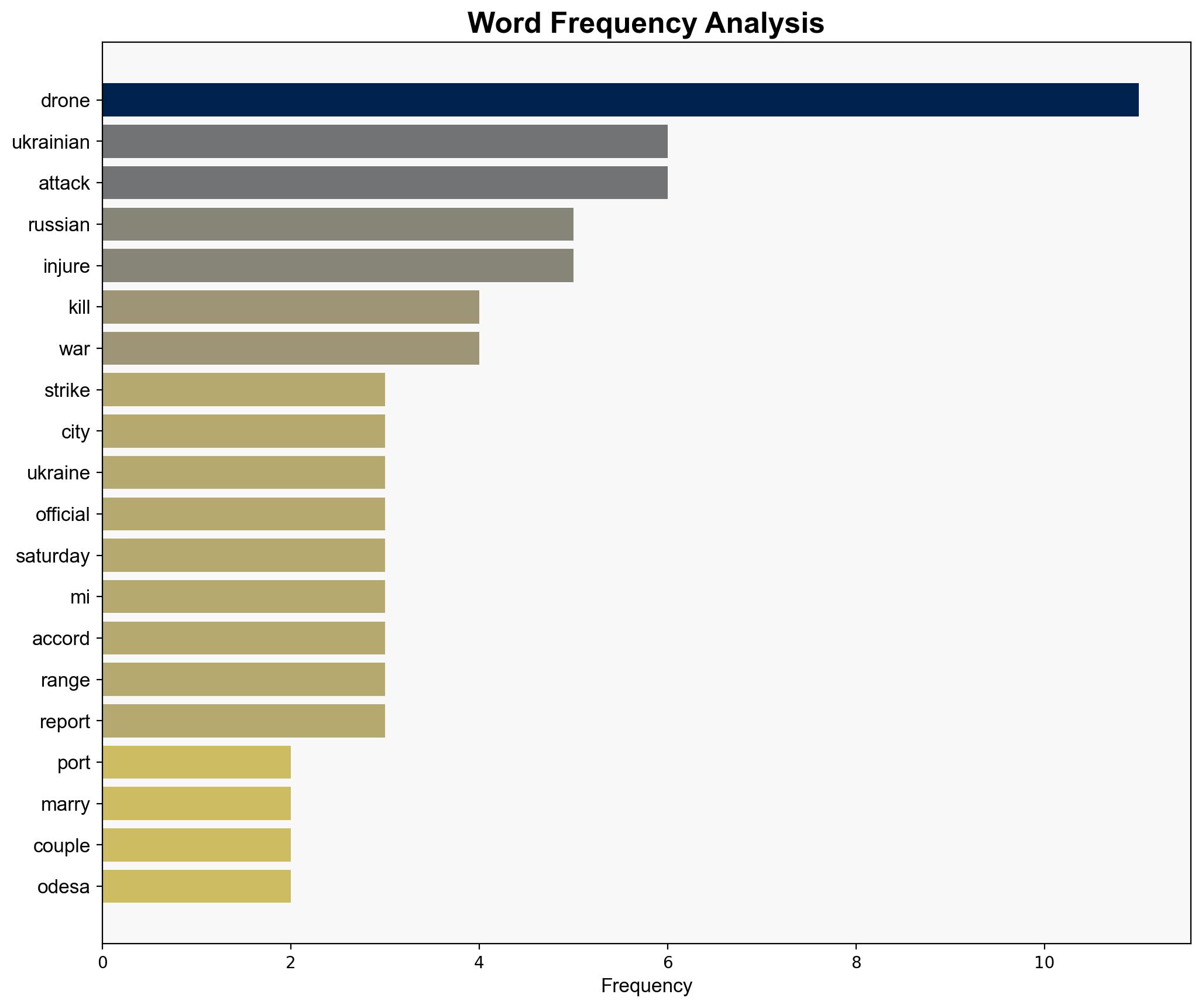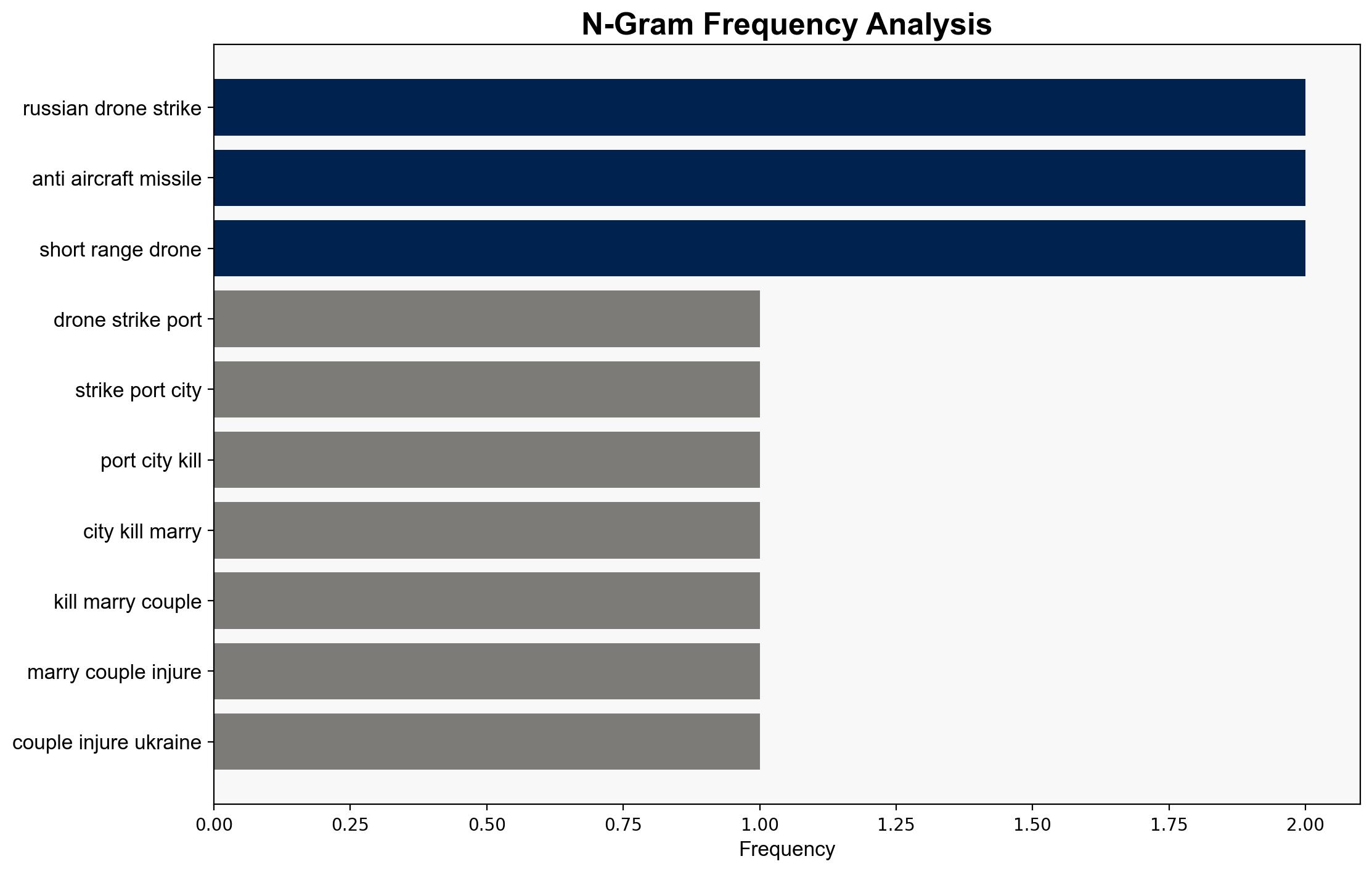17 injured married couple killed in Russian drone strike Ukraine says – CBS News
Published on: 2025-06-28
Intelligence Report: 17 injured married couple killed in Russian drone strike Ukraine says – CBS News
1. BLUF (Bottom Line Up Front)
A Russian drone strike on the southern Ukrainian port city of Odesa resulted in the death of a married couple and injuries to 17 others. This incident underscores the ongoing escalation of drone warfare in the region, highlighting the increasing sophistication and lethality of drone technology. The attack also signifies a continued threat to civilian areas, necessitating enhanced defensive measures and international diplomatic engagement to mitigate further civilian casualties.
2. Detailed Analysis
The following structured analytic techniques have been applied to ensure methodological consistency:
Causal Layered Analysis (CLA)
At the surface level, the drone strike is a direct military action targeting Ukrainian infrastructure and civilians. Systemically, it reflects Russia’s strategic use of drones to exert pressure on Ukraine and test new military technologies. The worldview underpinning this action is one of military dominance and territorial control. The mythic layer involves the narrative of technological superiority and the inevitability of collateral damage in modern warfare.
Cross-Impact Simulation
The strike may provoke retaliatory actions from Ukraine, potentially escalating into broader regional instability. Neighboring countries could face increased refugee flows and economic disruptions. The ongoing conflict may also strain international relations and impact global energy markets, given the strategic importance of the Black Sea region.
Scenario Generation
– Best Case: Diplomatic interventions lead to a ceasefire, reducing civilian casualties and stabilizing the region.
– Worst Case: Escalation into a wider conflict involving neighboring states, with significant humanitarian and economic repercussions.
– Most Likely: Continued sporadic drone strikes with intermittent diplomatic efforts, maintaining a state of low-intensity conflict.
3. Implications and Strategic Risks
The persistent use of drones in the conflict poses significant risks, including the normalization of civilian-targeted warfare and the potential for technological proliferation to non-state actors. This could lead to increased cyber vulnerabilities as both sides develop counter-drone technologies. The conflict also risks drawing in external powers, further complicating geopolitical dynamics.
4. Recommendations and Outlook
- Enhance intelligence-sharing and collaboration with allies to improve drone detection and defense capabilities.
- Engage in diplomatic efforts to establish conflict de-escalation mechanisms and protect civilian infrastructure.
- Monitor technological advancements in drone warfare to anticipate future threats and develop countermeasures.
5. Key Individuals and Entities
Oleh Kiper
6. Thematic Tags
national security threats, cybersecurity, counter-terrorism, regional focus





